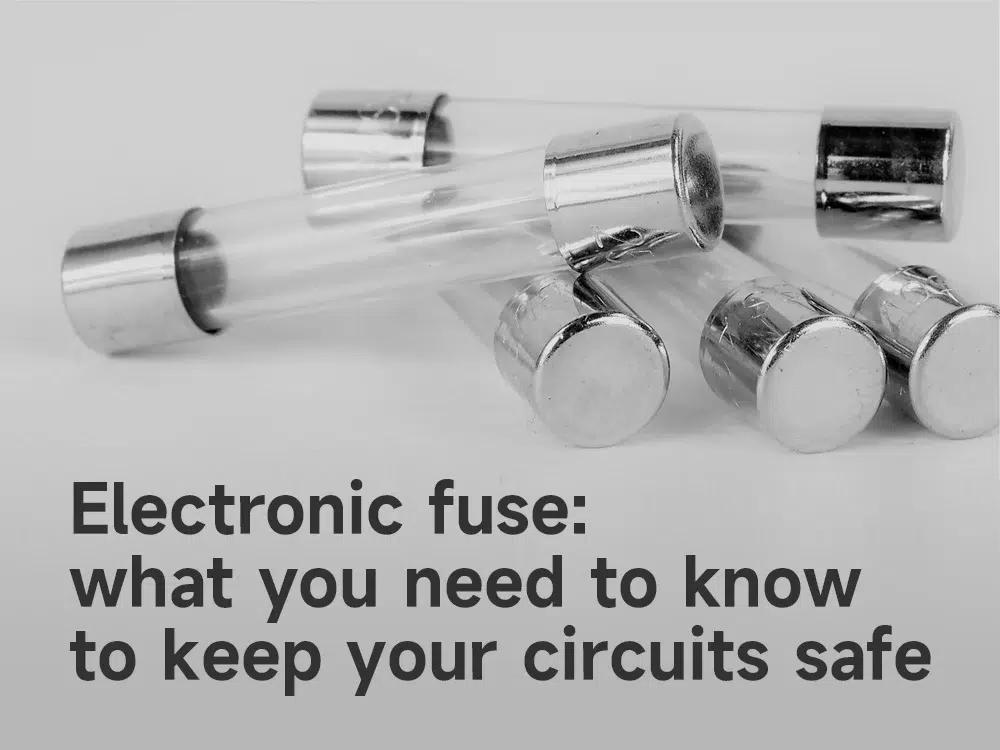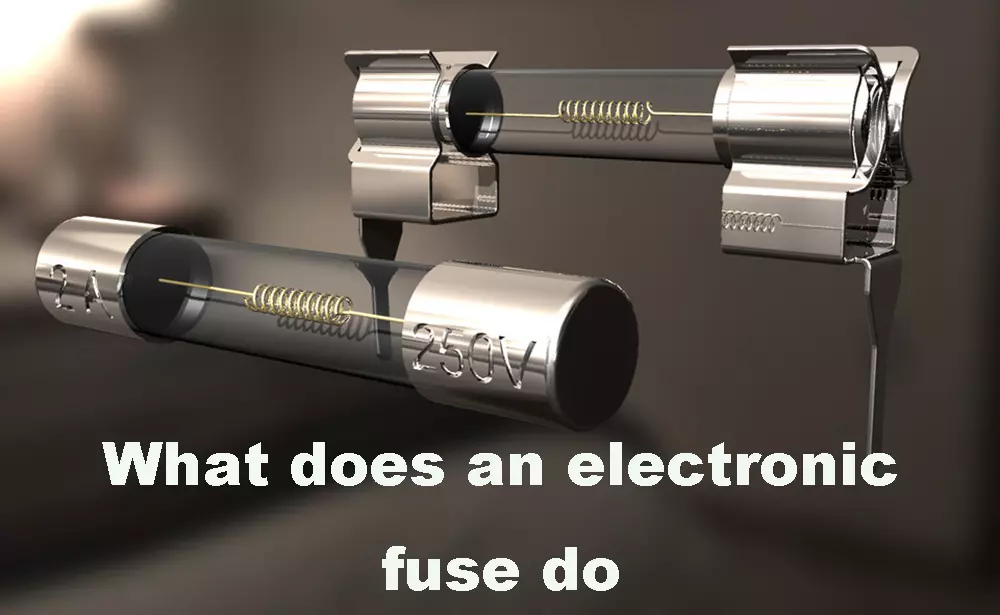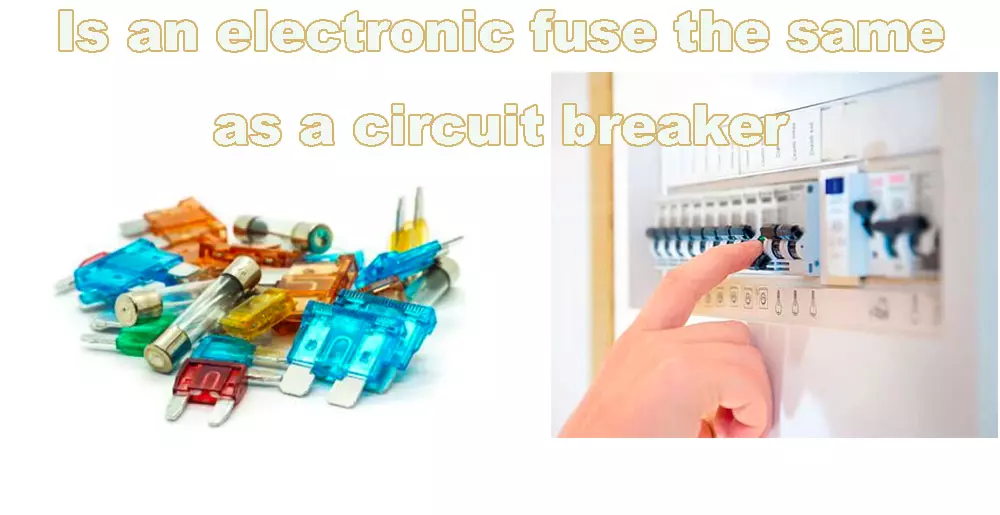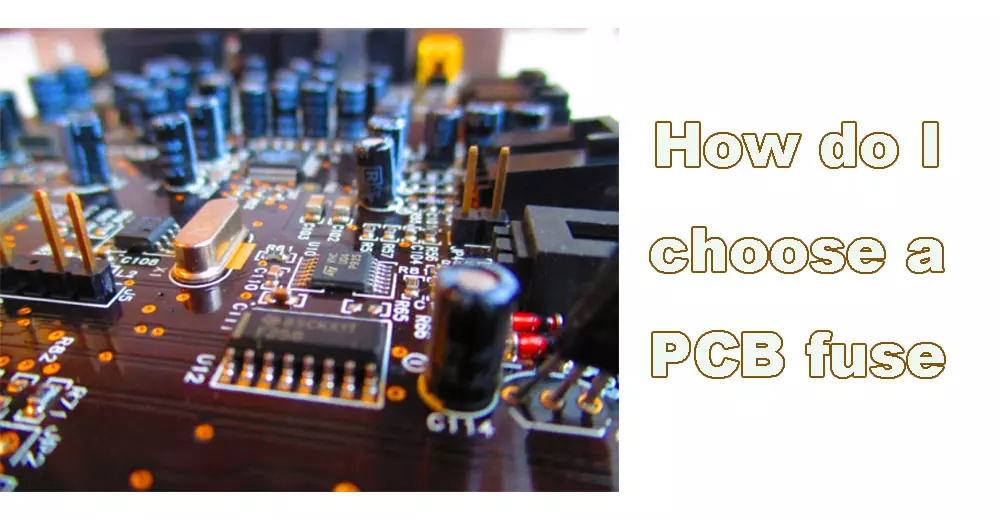
Electronic fuses are important components in protecting electronic devices and circuits from overcurrent conditions. Electronic fuses use solid-state technology to provide fast, precise protection against overcurrent events, while PCB fuses are designed to interrupt the flow of current in the event of an electrical fault. Selecting the right fuse is the key to ensuring the reliability and safety of electronic circuits and devices.
An electronic fuse is a circuit protection device(prevents overcurrent from damaging the circuit) that uses solid-state components to interrupt the flow of current in an electrical circuit in the event of an overcurrent condition. It functions like a traditional fuse but does not require physical replacement after being tripped. Instead, it automatically resets itself once the fault has been corrected, providing a more reliable and convenient way to protect against electrical overload.
There are several types of electrical fuses that are designed to protect electrical circuits from overcurrent conditions:
Traditional Fuses
Thermal Fuses
Resettable Fuses
Fast-Acting Fuses
Slow-Blow Fuses
High-Voltage Fuses
Low-Voltage Fuses
Semiconductor Fuses
. ..
Each type of fuse is designed with specific characteristics to meet the unique needs of various electrical systems and applications. Some fuses are designed to operate quickly to prevent catastrophic failures, while others are designed to withstand high voltage surges or provide long-term protection for sensitive components.

Electronic fuses, originally used to protect incandescent light bulbs, now serve to protect some electronic devices from current currents and internal faults. This protection mechanism can help prevent fires, explosions, or other hazards caused by electrical faults.
An electronic fuse is a circuit protection device that monitors the flow of current in an electrical circuit and interrupts it in the event of an overcurrent condition. When the current exceeds a predetermined threshold, the electronic fuse trips and opens the circuit, effectively shutting down the flow of electricity to prevent damage to the circuit components or equipment. Unlike traditional fuses, electronic fuses can automatically reset themselves once the fault has been cleared, providing a more convenient and reliable way to protect against overcurrent conditions.
Electronic fuses, also known as e-fuses, use a combination of solid-state components and sensing circuitry to protect against overcurrent conditions in an electrical circuit. The sensing circuitry continuously monitors the current flowing through the circuit and compares it to a predetermined threshold. If the current exceeds this threshold, the e-fuse trips and opens the circuit, cutting off the flow of electricity to prevent damage to the circuit components or equipment.
The solid-state components used in e-fuses typically include MOSFETs or other types of transistors that act as switches, as well as resistors, capacitors, and diodes that control the operation of the circuit. Some e-fuses also incorporate microcontrollers or other types of digital logic to provide additional functionality or features.
One of the key advantages of electronic fuses is that they can be designed to be resettable, meaning that they can automatically restore power to the circuit once the overcurrent condition has been corrected. This eliminates the need for manual replacement of the fuse, as is required with traditional fuses. Additionally, e-fuses can be more precise and reliable than traditional fuses, and can provide additional protection features such as short-circuit protection and overvoltage protection.

To test an electronic fuse, you will need a multimeter or other type of electrical tester that can measure voltage and continuity. Here are the steps to test an electronic fuse:
1.Turn off power to the circuit that contains the e-fuse.
2.Locate the electronic fuse on the circuit board or in the electrical system.
3.Set your multimeter to measure continuity or resistance.
4.Touch one of the multimeter leads to one side of the e-fuse, and the other lead to the other side of the e-fuse.
5.If the e-fuse is functioning properly, the multimeter should show a low resistance or continuity reading.
6.If the e-fuse is not functioning properly, the multimeter will show an open circuit or infinite resistance reading.
It is important to note that some electronic fuses may be difficult to test without specialized equipment, and testing them incorrectly could cause damage to the circuit or equipment. If you are unsure how to test an electronic fuse or suspect that it may be malfunctioning, it is best to consult a qualified electrician or technician.
The maximum amperage rating of an electronic fuse, or eFuse, can vary depending on the specific model and application. However, eFuses are generally designed to handle lower amperages compared to traditional fuses. Common eFuse amperage ratings can range from as low as 0.1A up to several amps.
Some specialized eFuses may have higher amperage ratings, but it is important to choose an eFuse with an appropriate rating for the specific circuit and application to ensure proper protection against overcurrent conditions. The amperage rating of an eFuse should be clearly indicated in the manufacturer’s datasheet or product specifications.

Although both electronic fuses and circuit breakers belong to the active components and are used for protecting electrical circuits from overcurrent conditions, they are not the same because they do so using different mechanisms and are designed for different types of applications.
An electronic fuse, also known as an eFuse, is a solid-state circuit protection device that is designed to protect against overcurrent conditions. It operates by using solid-state components to monitor and interrupt the flow of current in the circuit when the current exceeds a certain threshold. Electronic fuses are typically used in low-voltage applications and can be resettable.
On the other hand, a circuit breaker is a mechanical switching device that is designed to protect against overcurrent conditions, short circuits, and ground faults while electronic fuses generally only achieve short-circuit protection. It operates by using a bimetallic strip that heats up and bends when current flows through it, causing the circuit to open and interrupt the flow of current. Circuit breakers are typically used in high-voltage applications and are not resettable.

A PCB fuse, also known as a printed circuit board fuse, is a type of electrical fuse that is designed to be mounted directly on a printed circuit board (PCB). It is used to protect electronic components and circuits on PCB from overcurrent conditions caused by short circuits, overloads, and other electrical faults.
PCB fuses are typically small in size and come in a variety of shapes and ratings to fit different PCB designs and applications. They can be designed for surface-mount or through-hole mounting and can be made from a variety of materials, including ceramic, glass, or polymer.
When an overcurrent condition occurs, the PCB fuse will interrupt the flow of current by melting a metal element or wire inside the fuse. This breaks the circuit and prevents the flow of current from damaging the PCB components or equipment. PCB fuses are often designed to be replaceable, allowing for easy maintenance and repair of the circuit.
PCB fuses are commonly used in electronic devices such as computers, telecommunications equipment, and industrial control systems. They are a crucial component in protecting electronic circuits and ensuring their reliable operation.
The placement of a fuse on a printed circuit board (PCB) depends on the design and requirements of the circuit being protected. In general, the fuse should be located as close to the power source as possible to ensure that it protects the circuit from overcurrent conditions.
Typically, a fuse is connected in series with the power supply and the load in the circuit. This means that the current flows through the fuse before it reaches the load. To connect a fuse to a PCB, the fuse is mounted on the board using surface-mount or through-hole technology, and the leads or terminals are connected to the circuit using solder or other appropriate methods.
The exact location of the fuse on the PCB can vary depending on the circuit design, but it should be placed in a position that is easily accessible for replacement or maintenance if needed. It is also important to ensure that the fuse is rated appropriately for the circuit and that it can handle the maximum expected current without tripping or failing prematurely.
The specific location of the fuse on a PCB should be determined by the circuit designer or technician responsible for PCB design and PCB assembly.

Choosing the right PCB fuse involves several factors that need to be taken into account to ensure proper protection of the circuit. Here are some considerations to keep in mind when selecting a PCB fuse:
1.Current rating: The current rating of the fuse should be equal to or slightly higher than the maximum current expected in the circuit. The rating should be selected based on the steady-state current and any surge or peak currents that may occur.
2.Voltage rating: The voltage rating of the fuse should be equal to or higher than the maximum voltage expected in the circuit.
3.Operating temperature: The fuse should be able to operate within the temperature range of the circuit. The ambient temperature of the environment should also be considered.
4.Fuse type: There are several types of PCB fuses available, including fast-acting, time-delay, and slow-blow. The type of fuse selected should be based on the specific requirements of the circuit.
5.Size and shape: The size and shape of the fuse should be appropriate for the PCB design and assembly process.
6.Certification: The fuse should be certified by appropriate agencies, such as UL or CSA, to ensure its quality and safety.
7.Cost: The cost of the fuse should be considered, along with its performance and suitability for the circuit.
Overall, selecting the right PCB fuse requires careful consideration of the circuit’s requirements and the fuse’s characteristics. It is recommended to consult with a qualified engineer or technician to ensure proper selection of a PCB fuse.